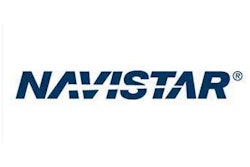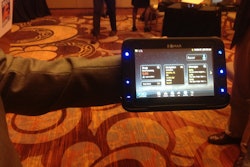
For a number of years, the company has been making strides to improve the accuracy of its planning, dispatch, payroll and billing processes to address its top operational challenges: pricing, driver pay and risk management.
In 2004, the company purchased PC Miler Streets from ALK Technologies in an effort to use actual or “reality based” street-to-street mileages to make better pricing decisions and to pay drivers for the actual miles they drove. This was the first step of what John Erik Albrechtsen, operations manager at the Winnipeg, Manitoba-based fleet, calls “journey management.”
A common practice in the transportation industry is for carriers to price shipments and pay drivers on planned routes and mileage systems from city to city. This practice ignores the actual mileage from the origin to the destination address, he says.
“If you measure from city center to city center then track the actual mileage, there will be a significant difference,” he says. “In our case it was approximately 7 to 8 percent variance.”
Paul’s Hauling began to bill customers for actual miles driven and pay drivers for actual miles driven and hours worked from shipping point to destination. Over time, and with further improvements in technology, the effort paid big dividends.
On average, the fleet’s actual mileage is within 0.75 percent of billed miles. Furthermore, drivers are paid for actual miles driven and hours worked, along with being compensated for unplanned delays and detours.
Albrechtsen credits the success of journey management to the integration of PC Miler Streets with TMWSuite and the PeopleNet BLU.2 mobile communications system. Using the Streets local map data as the foundation, the system uses actual lat/long coordinates of drivers and customer locations, captured by PeopleNet, as inputs for PC Miler to generate turn-by-turn directions and distances.
Paul’s Hauling recently added the CoPilot Truck in-cab navigation system to PeopleNet BLU.2. Now, its CoPilot Truck navigation is using the same customized, pre-planned routes that the office uses for billing. CoPilot Truck and PC Miler Streets are coordinated in real-time through ALK’s RouteSync functionality, which delivers the guidance to the vehicle for drivers to drive the miles they are being paid for.
Paul’s Hauling has been on the forefront of working with its software providers to bring the RouteSync functionality to life.
“Integrated truck navigation is in its infancy,” Albrechtsen says. “More and more people are getting on board. This will benefit Paul’s and ultimately there will be a larger benefit to the whole industry in terms of operational consistency. The goal is a 100 percent confidence level in safe, compliant routing.”












